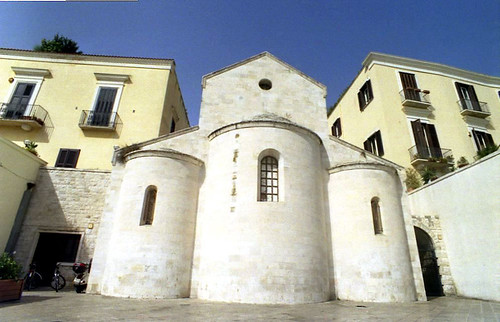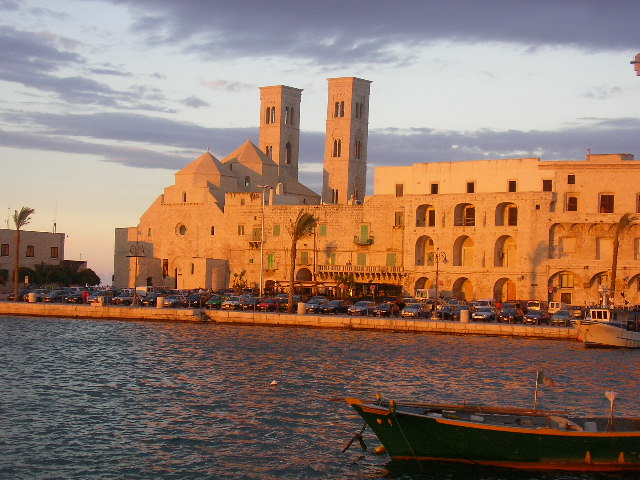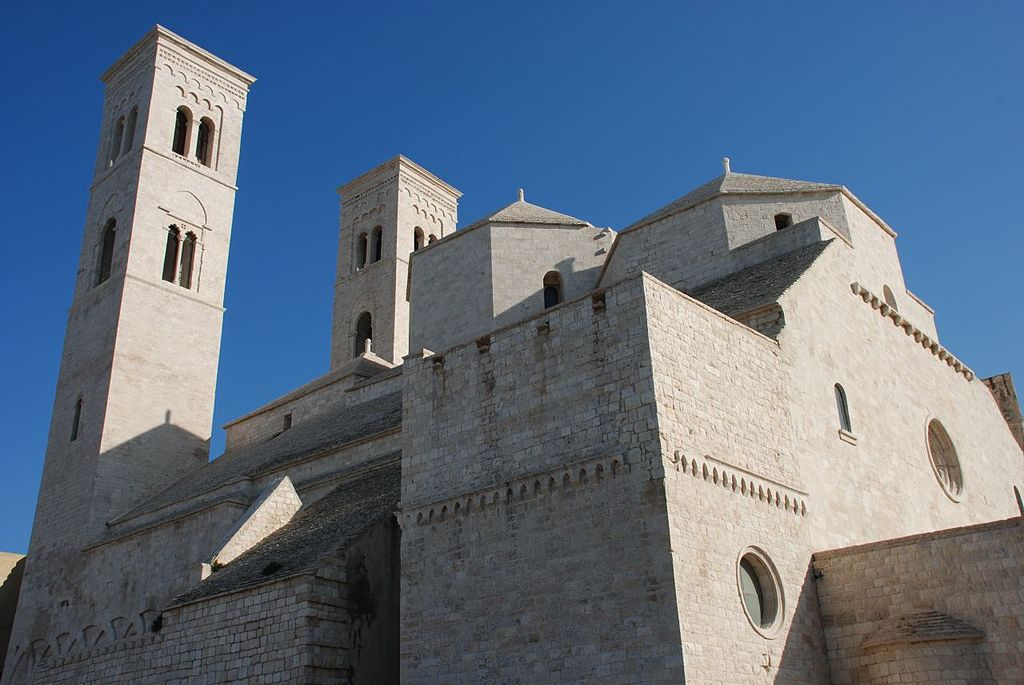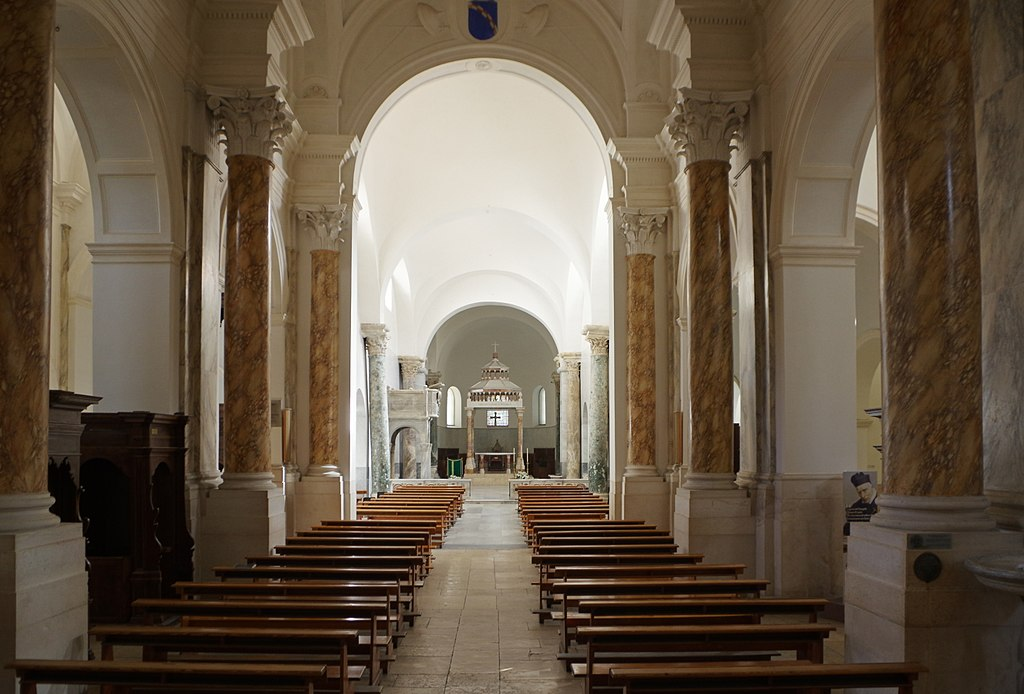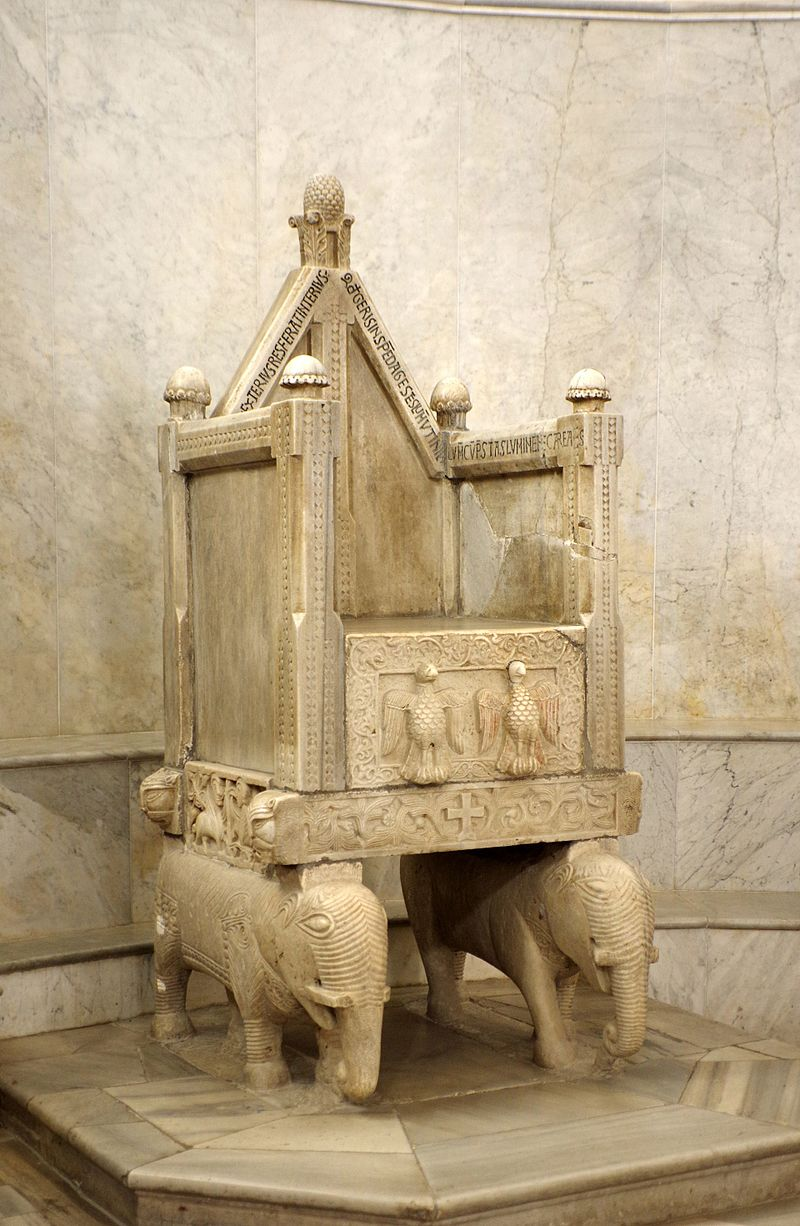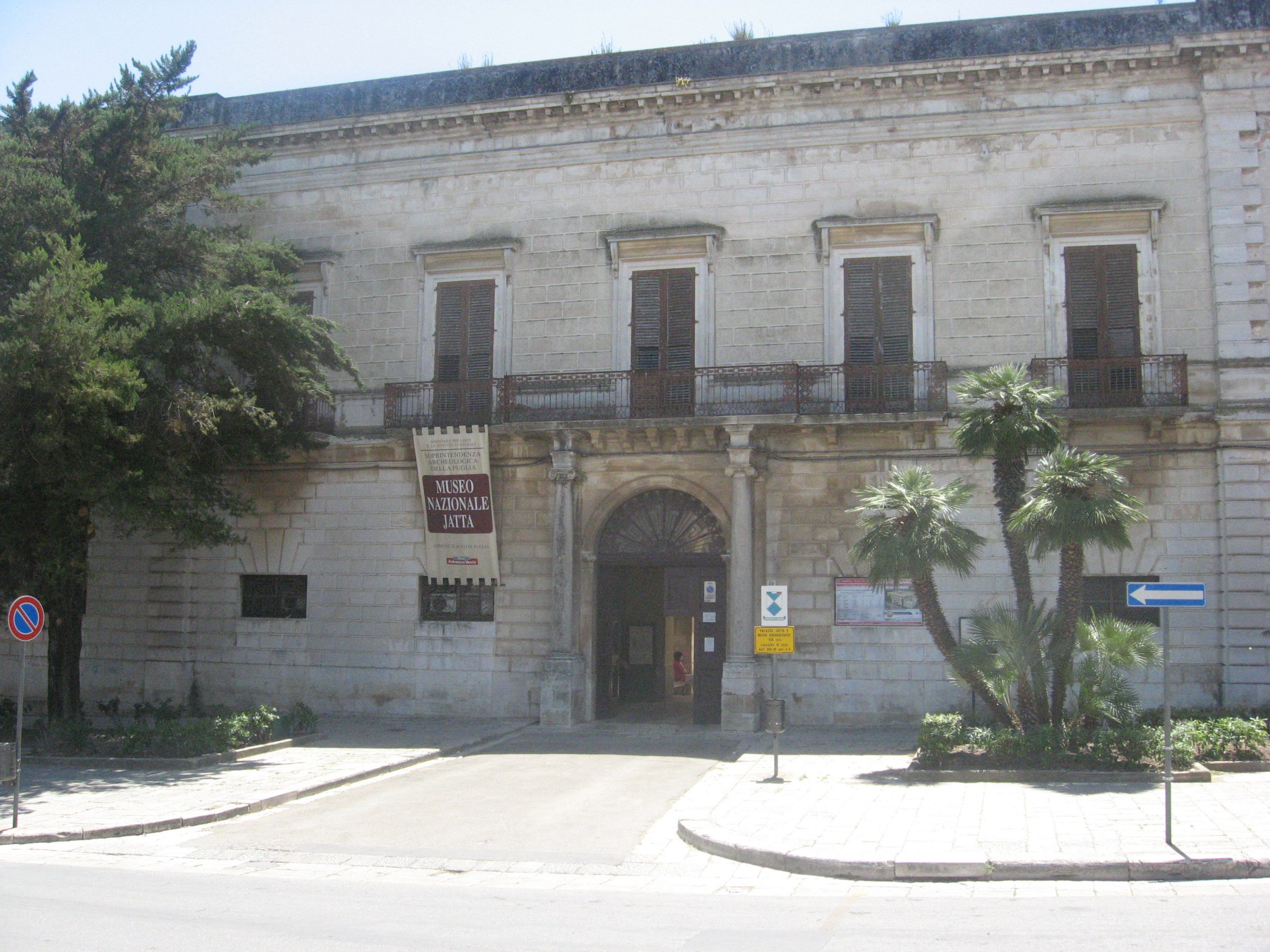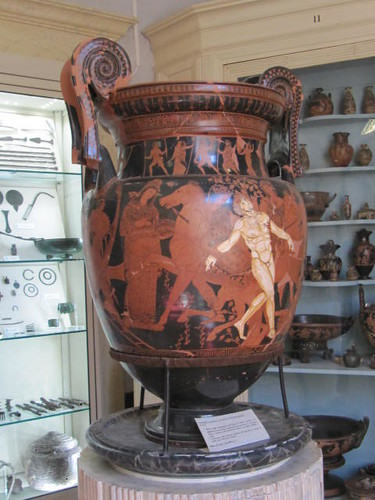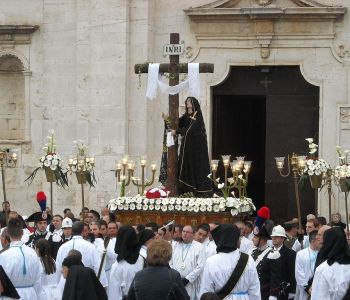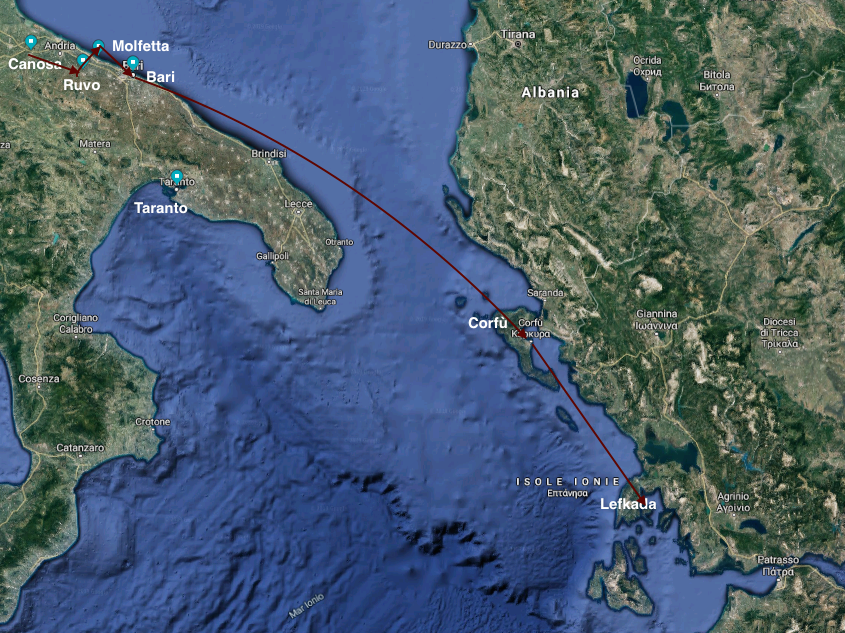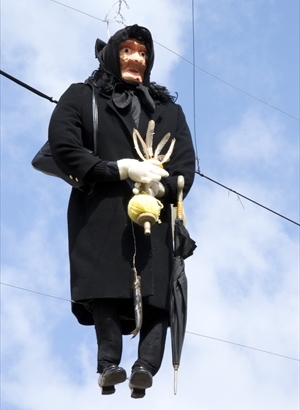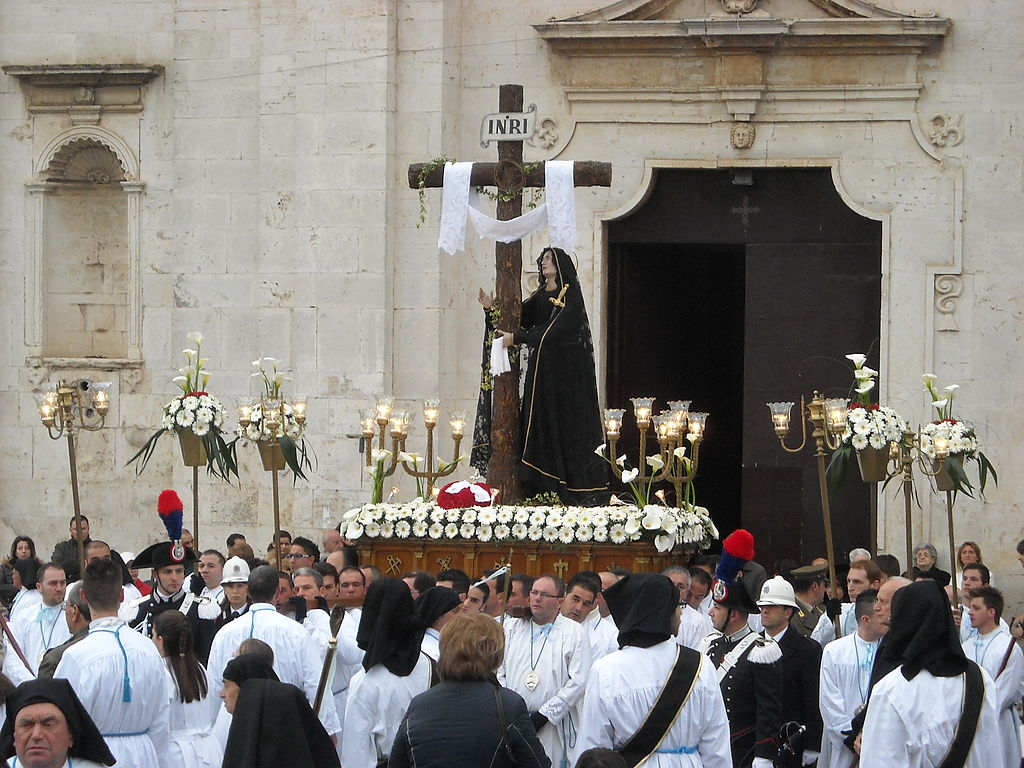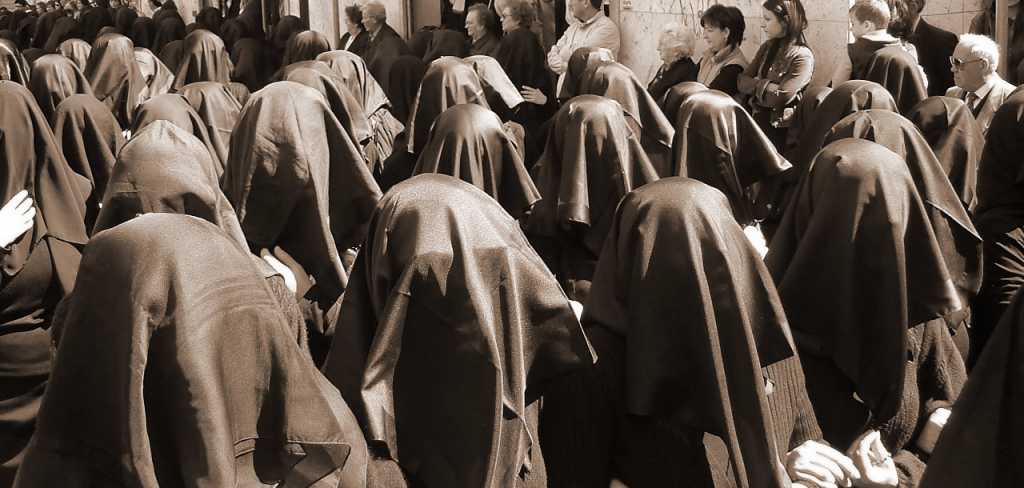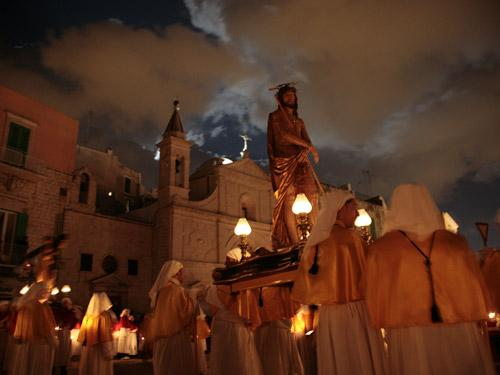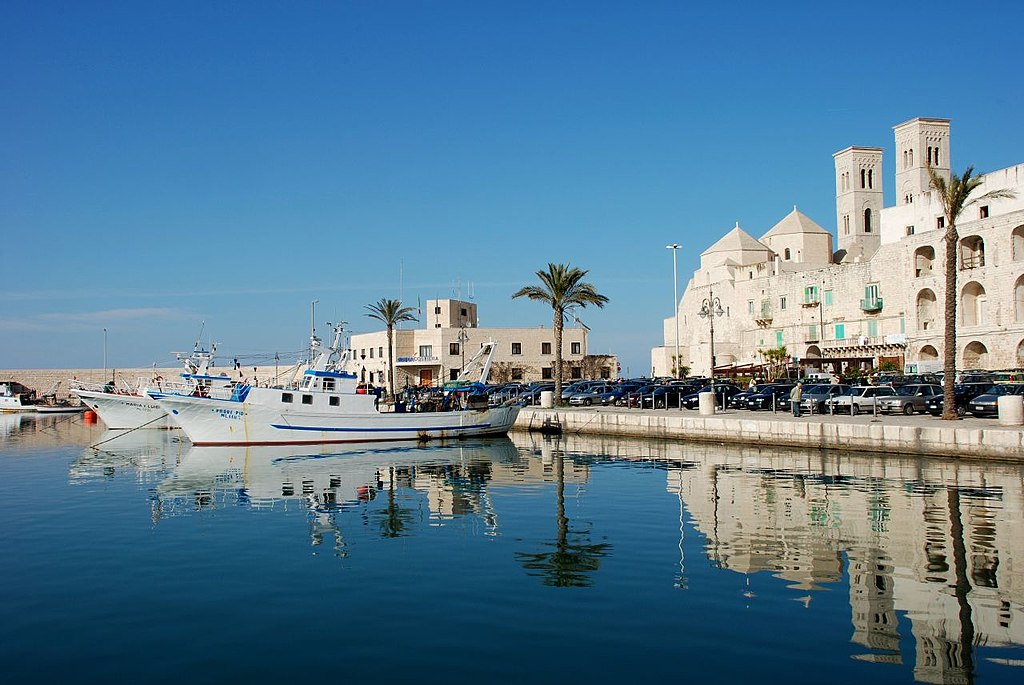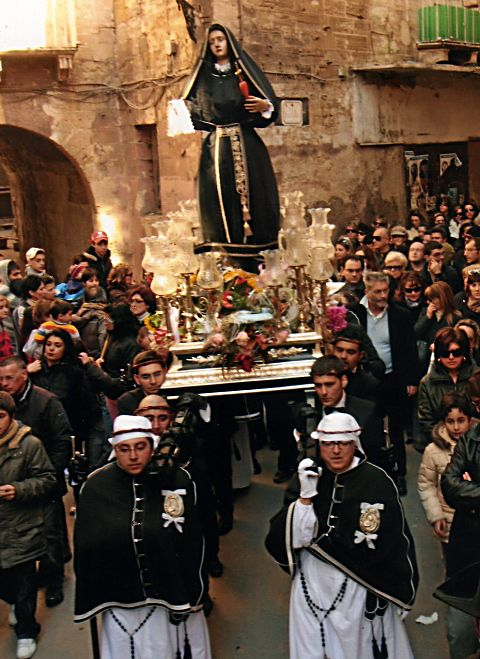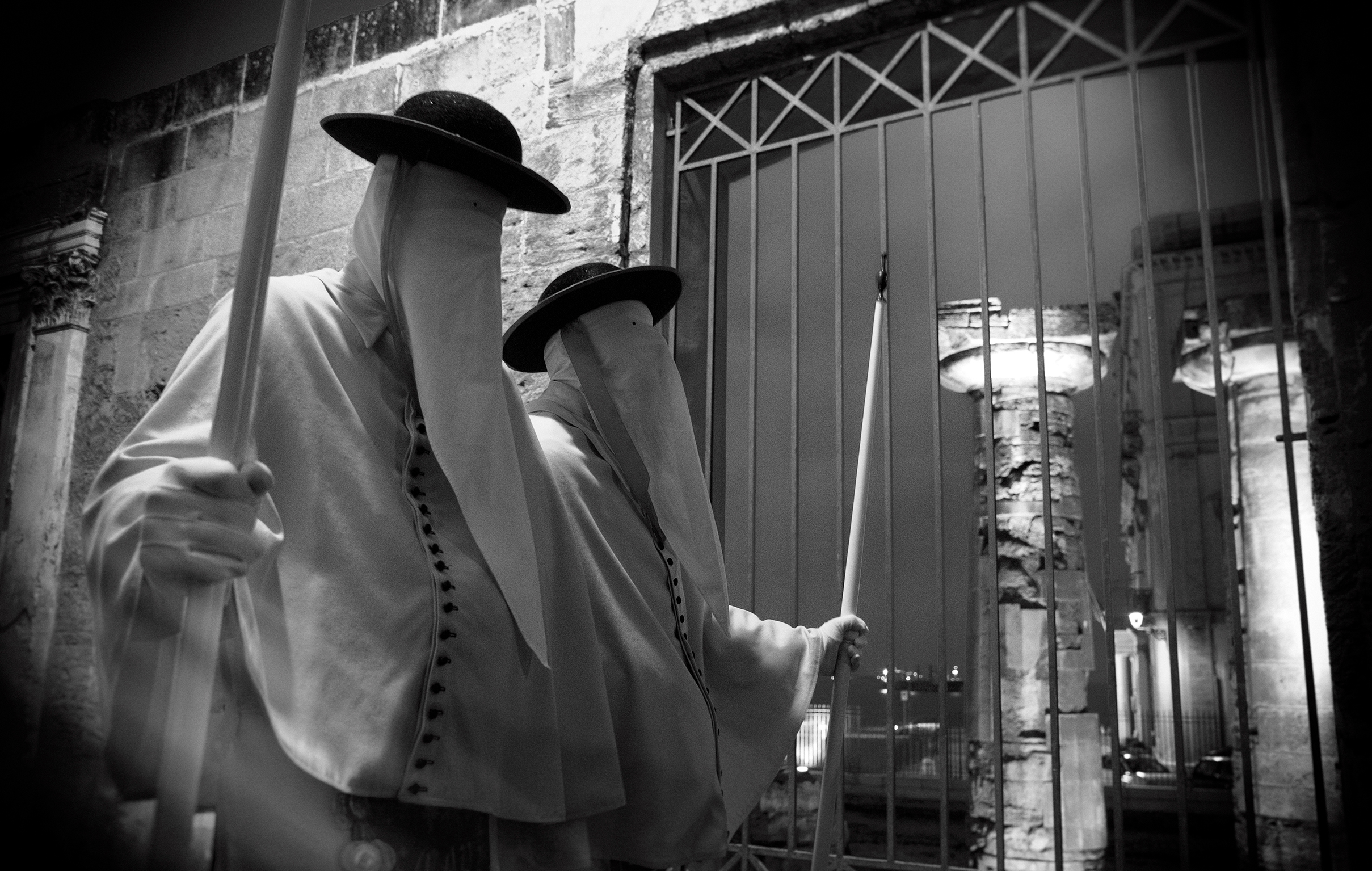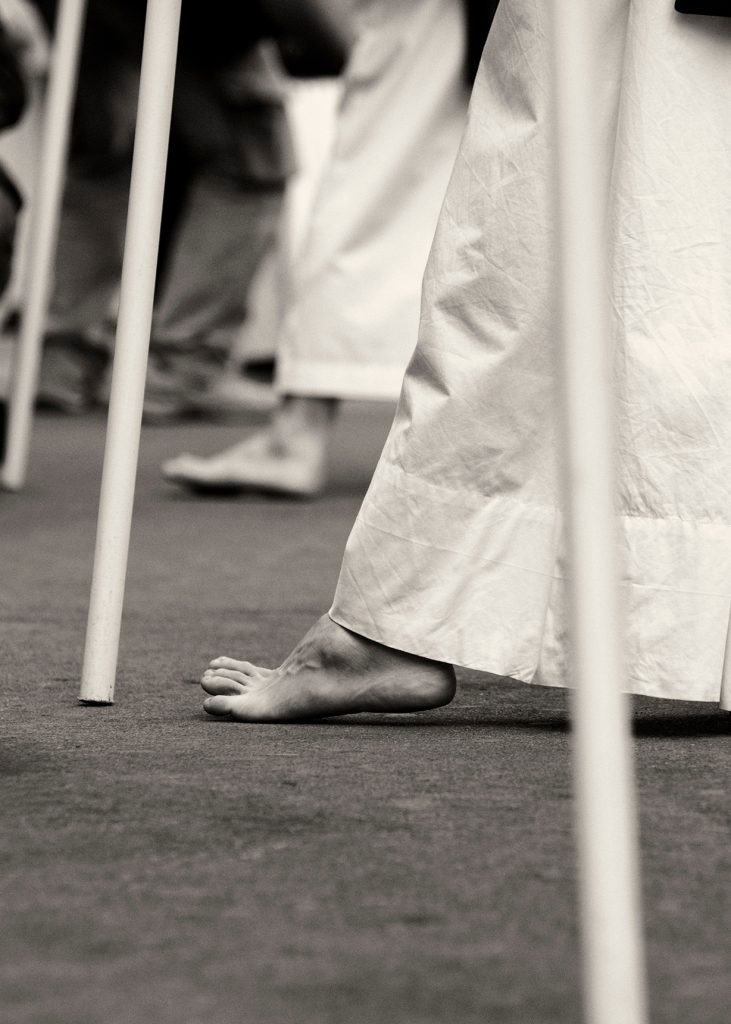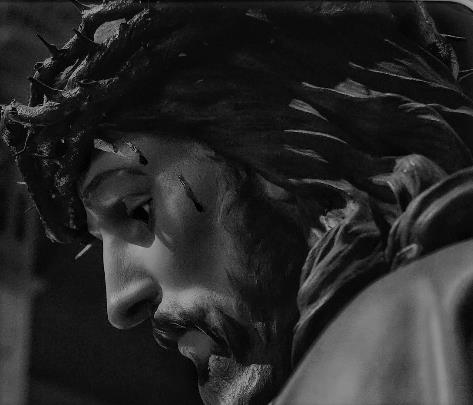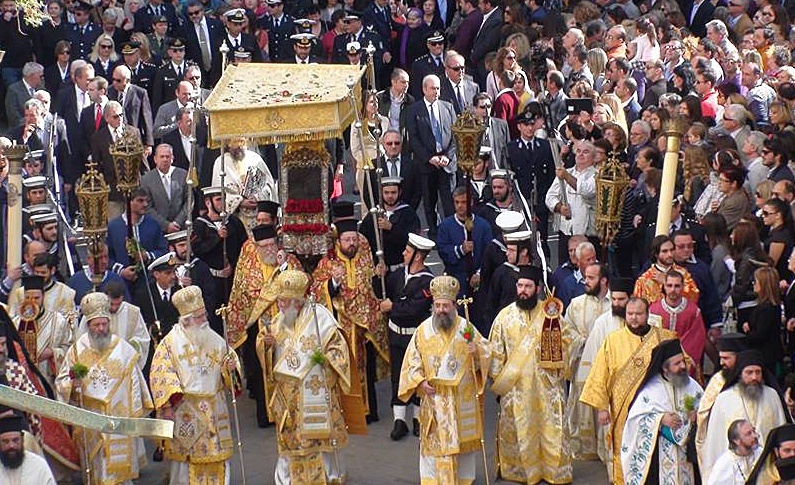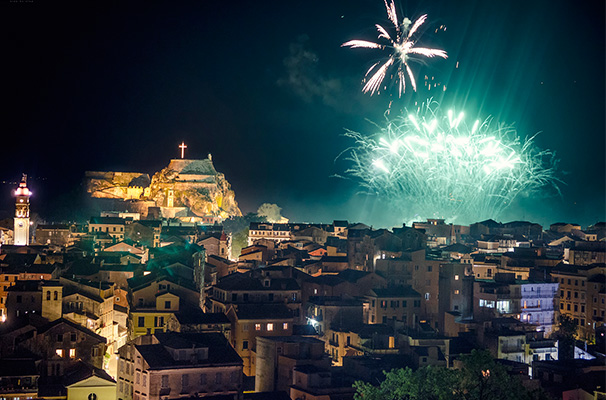 Itinerary-08-Passion-link-05
Itinerary-08-Passion-link-05
The Basilica of Saint Nicholas
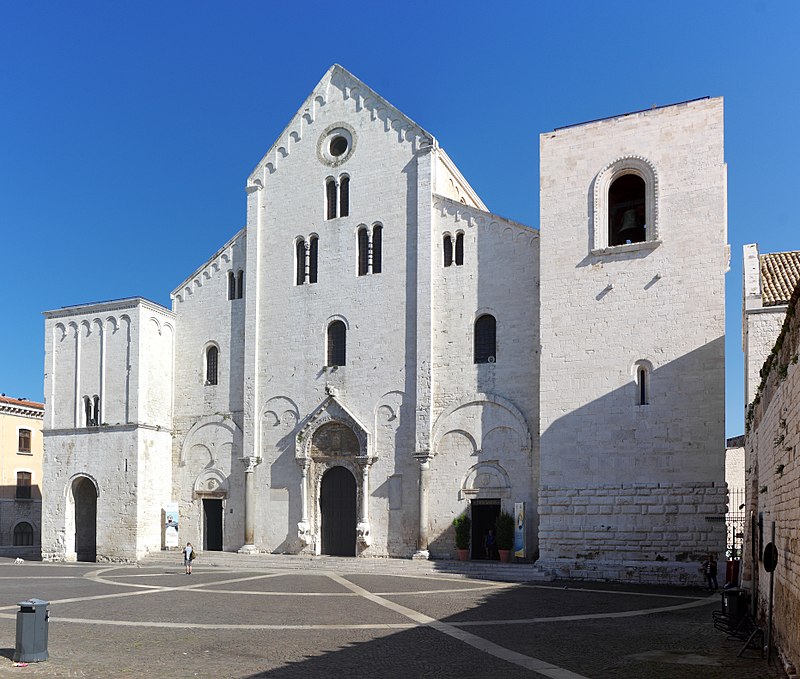
Bari, Basilica di San Nicola (author: Berthold Werner, CC BY-SA 3.0, https://commons.wikimedia.org/w/index.php?curid=61405024)
The Basilica di San Nicola, commissioned by the Benedictine abbot Elias in 1089, was consecrated in 1197. The cultured abbot wanted to erect a building that combined various functions and meanings. It had to be a pilgrimage church, the main church of Bari people and a landmark for those who came from the sea and immediately faced the shape of its soaring towers.
Within the urban fabric, after walking alongside the castle and the cathedral, following today’s Via delle Crociate, and crossing the Arco angioino (the Angevin arch), we get to Piazza di San Nicola.
The basilica, the manifestation of Apulian Romanesque architecture par excellence, stands out in its austere and white tripartite façade, enlivened only by small blind arches in succession until the main portal tympanum and, on the upper register, by the light and dark effect of single-lancet and mullioned windows.
The solid volumes of the building can be clearly perceived thanks to the deep arches running along the side perimeter of the building.
The upper register is lightened on both sides by the elegant succession of six-light windows, which, as stone embroideries, let the light create interesting sculptural effects.
It is a totally homogeneous structure, similar to a fortress, which recalls the big Romanesque cathedrals in the North as for the façade flanked by two imposing towers, but encloses the domes and vaults volumes in rectilinear structures, in line with the Middle East construction techniques and as a tribute to a long Apulian tradition. In order to allow for the flow of pilgrims, who visited in large numbers Saint Nicholas’ relics, along the basilica perimeter there are five decorated portals with sculptures able to combine the beauty of shapes and the rich educational content. In the basilica sculptural decorations, all energy of the Apulian Romanesque style emerges: worlds inhabited by monstra, obtained directly from the Northern bestiaries, coexist with precise classical echoes enriched with clearly Islamic motifs, which are taken from cloth and valuable objects that reached Apulian coasts together with pilgrims and merchants.
In particular, the so-called portal of the lions is worth noting: it opens on the left side of the basilica, just under the first deep side arch. Along the archivolt, the epic of the Normans – the new Lords of Bari – is told through sculpture. With an extraordinarily successful ductus in terms of narration and propaganda, the elegant patterns of the Bayeux Tapestry seem to acquire new life and shapes in these sculptures, arrived in town to tell the stories of the Lords from the North to the new southern subjects.
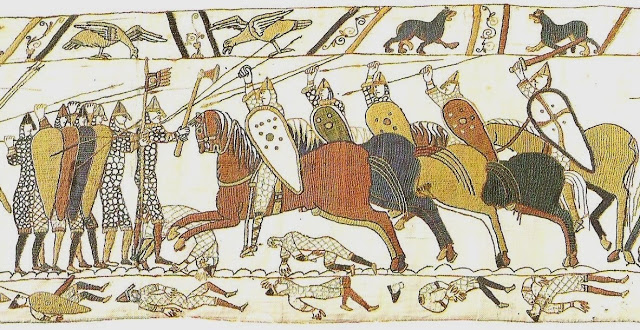
Bayeux Tapestry, 11th century, today at the Centre Guillaume-le-Conquérant in Bayeux: a detail
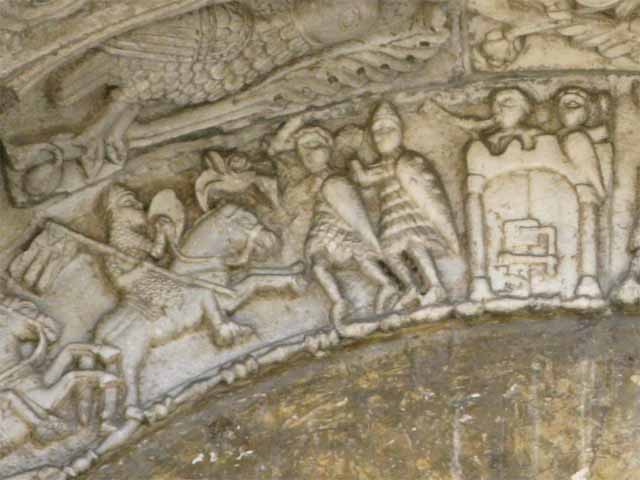
Bari, Basilica di San Nicola, portal of the lions, 12th century, a detail
On the contrary, a clearly more Mediterranean style connotes the sculptures of the two column-bearing oxen that ornate the prothyrum of the basilica main portal, made by an anonymous sculptor able to combine local classical tradition motifs with a fully Romance and European style.
For ages the elderly inhabitants of the old town have been telling a legend to the travelers stopping in front of the church. When the Myra Saint’s body came to town:
i cittadini non erano d’accordo sul luogo dove riporlo. Perciò fu stabilito di prendere dei buoi dalla campagna e di deporre le reliquie in una chiesa da costruirsi lì dove gli animali avessero trasportato il carro. Allora i buoi trassero il carro sul quale era stato posato il santo corpo dalla riva del mare. E la chiesa di San Nicola fu costruita lì, nel mare, donde l’acqua penetra talvolta nella cripta. (A. Adorno, Itinéraire d’Anselme Adorno en Terre Sainte)
Actually the basilica location, despite the legend, is not fortuitous but meets precise symbolic and political needs. The new palatine church had to rise where the Katepano Palace was located, in order to indicate that the patron Saint and the Norman Lords who had supported the church construction were about to take the place and role once occupied by the Byzantines; furthermore, the location close to the sea had to highlight the close relationship of the town with the Adriatic Sea. Therefore, the basilica apse area, facing the sea, is like a second façade, with a very large window decorated with carved animals. They are elephants and sphynxes, which, in addition to their symbolic meanings, refer to the East reached and left by pilgrims and merchants boarding in Bari under Saint Nicholas’ protection.
Bari, Basilica di San Nicola, sphinx carved in the apse window, a detail.
The church interior has a Latin cross plan with reduced transept wings and is divided into three naves by very big Oriental columns – decorated with carved capitals – that alternate with pillars. The transverse arches were built after the first construction stage instead.
In the chancel area, the travelers may admire the so-called Abbot Elias’ cathedra. The throne, intended for the abbot, is entirely carved out of marble by an artist able to combine the Byzantine elegance in the decorative elements with Romanesque expressionism connoting the telamons that support the throne, whose faces show the effort to bear the load and the burden of sin.
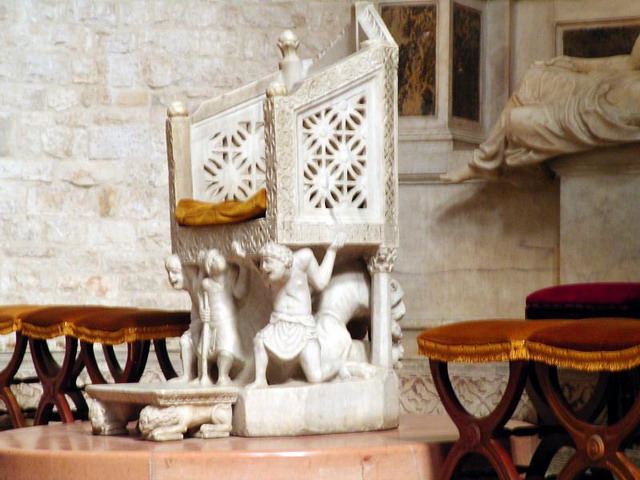
Bari, Basilica di San Nicola, interior, Abbot Elias’ cathedra
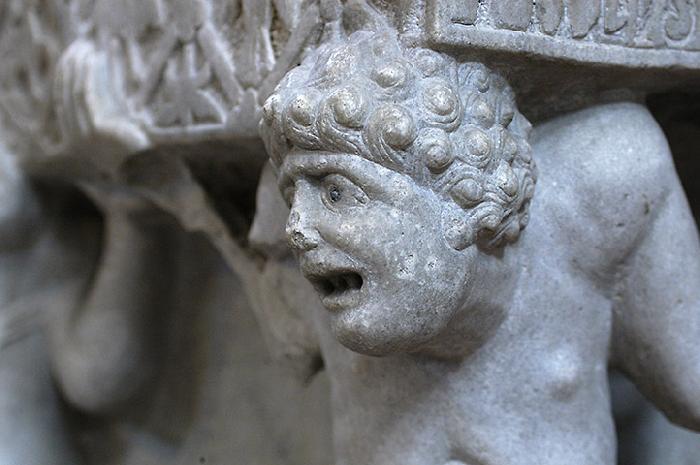
Bari, Basilica di San Nicola, interior, Abbot Elias’ cathedra, a detail
In this solemn Romanesque setting, the elegant art de cour, imported from Île-de-France by the Angevins, who succeeded to the Normans and the Swabians as leaders of the town, and the oriental purely Byzantine splendor of the crypt, full of sumptuous ornaments and icons, dialogue in an interesting contrast (M. S. Calò Mariani, L’immagine ed il culto di san Nicola a Bari e in Puglia).
The crypt may be accessed through a staircase in the aisle that leads the faithful to a spiritual dimension, thanks to the abundance of icons, lamps, precious metal ornaments, fabrics and embroideries, which contribute to make the view of Saint Nicholas’ relics, here kept, extremely evocative.
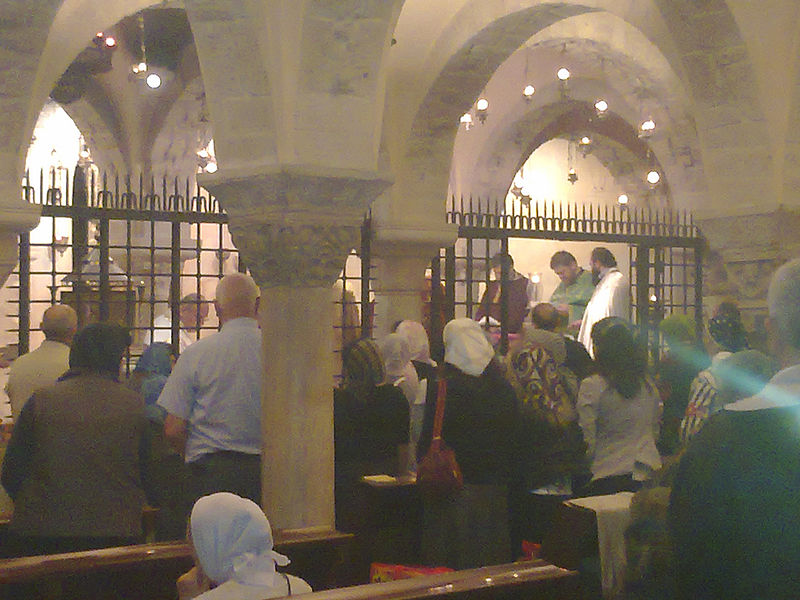
Bari, Basilica di San Nicola, crypt. (GNU Free Documentation License)
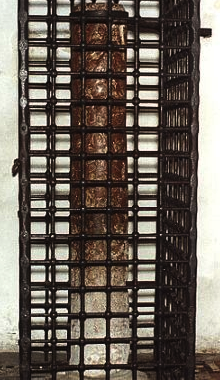
Bari, Basilica di San Nicola, crypt, the column in the grating.
The crypt is not only the site of the sacred, but also a place of narration and legend, where everything contributes to lead the faithful to meditation and the traveler to listening, as the ancient column surrounded by a grating in a corner. Various legends have been passed down about this object over the centuries and have contributed to increase Bari people’s and pilgrims’ devotion to Saint Nicholas. It is said that, after the Council of Nicaea, Nicholas went to Rome to pay tribute to Pope Sylvester. There, in front of a loose woman’s house about to be demolished, he saw a nice column and drove it into the Tiber, through which it miraculously reached Myra port. Back from Rome, he put it in the cathedral of his town. As it had miraculously reached the Anatolian city, it is said to be floating again in Bari’s waters, when the saint’s relics came to town. However, nobody was able to get it. The night before Saint Nicholas’ relics were placed in the new church that was consecrated to him, the inhabitants of Bari heard the bells ringing, rushed to the basilica and saw a holy bishop complete the work, placing a pink column with the help of two angels (See A. Beatillo, Historia delle vita, miracoli, traslatione, e gloria dell’Illustrissimo confessore di Christo s.Nicolò il Magno, arcivescovo di Mira, patrone, e protettore della città di Bari).
Since then, that column, which is said to have traveled from the East to the West, exactly as Saint Nicholas’ cult, has become an object of devotion on the part of local people, pilgrims and especially marriageable women.
A lot of artworks coming from the Basilica are now kept in the Museo Nicolaiano in the old town, located at 3 Strada Vanese not far from the church.
